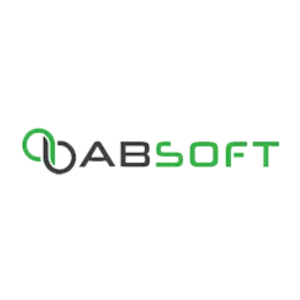Turbo Recondition: Restoring Aerodynamics and Rotor Efficiency
Turbochargers are precision-engineered machines that rely on aerodynamic efficiency and rotor stability to deliver compressed air into an engine. Even the smallest deviation in blade shape, surface condition, or rotor balance can reduce performance. Over years of operation, erosion, fouling, fatigue, and wear gradually compromise aerodynamic efficiency.
This is where turbo recondition becomes essential. By restoring damaged aerodynamic surfaces and balancing the rotating assembly, the process ensures the turbocharger once again delivers optimal boost, fuel economy, and reliability.
The Aerodynamics of Turbochargers
The aerodynamic function of a turbocharger depends on three key components:
Compressor Wheel – Draws in and compresses intake air.
Turbine Wheel – Extracts energy from exhaust gases to power the compressor.
Housing Geometry – Shapes airflow and controls pressure ratios.
Each of these elements must maintain precise aerodynamic profiles to deliver efficiency. Over time, exposure to contaminants, debris, and thermal stress alters these profiles, reducing flow efficiency.
Common Aerodynamic Losses in Turbos
Blade Erosion
Tiny particles from intake air or exhaust gases erode compressor and turbine blades. This alters curvature, reducing aerodynamic lift and increasing drag.
Fouling and Deposits
Oil mist, soot, and unburnt fuel can coat blades, increasing surface roughness and reducing flow efficiency.
Blade Deformation
Thermal cycling or foreign object damage can bend blades, distorting aerodynamic flow paths.
Housing Wear
Erosion and deposits in the compressor and turbine housings alter flow channels, lowering pressure ratios.
Tip Clearance Growth
Bearing wear or housing distortion increases the gap between blade tips and housings, reducing compression efficiency.
Each of these losses compounds over time, often unnoticed until engine performance and fuel efficiency decline.
Rotor Dynamics and Stability
Beyond aerodynamics, turbo performance depends on rotor stability. The rotor assembly spins at speeds exceeding 100,000 RPM, supported by a thin film of lubricating oil. Any imbalance or misalignment causes vibration, which accelerates wear and reduces efficiency.
Problems arise when:
Bearings wear unevenly, increasing shaft play.
Deposits cause rotor imbalance, throwing the system off balance.
Thermal distortion misaligns the shaft, creating eccentric rotation.
Rotor instability not only reduces efficiency but also risks catastrophic turbo failure.
How Turbo Recondition Restores Efficiency
Recondition restores both aerodynamics and rotor stability through precision engineering steps:
1. Blade Profile Restoration
Damaged blades are cleaned, repaired, or replaced with parts matching original aerodynamic specifications. This ensures correct curvature and flow characteristics are reinstated.
2. Surface Refinishing
Compressor and turbine surfaces are cleaned of deposits and polished to restore smoothness, reducing drag and turbulence.
3. Housing Remachining
Worn or eroded housings are remachined to restore correct flow passages, pressure ratios, and clearances.
4. Tip Clearance Resetting
Recondition involves resetting tolerances between blade tips and housings, ensuring maximum aerodynamic efficiency with minimal leakage.
5. Dynamic Balancing
Rotor assemblies are balanced using high-speed balancing equipment. This ensures stability across the full RPM range, eliminating vibration and extending bearing life.
6. Bearing and Seal Renewal
New bearings restore correct shaft alignment, reducing rotor wobble and restoring concentric rotation.
https://www.sinspeed.co.uk/category/turbo-repairs/Turbo Recondition: Restoring Aerodynamics and Rotor Efficiency
Turbochargers are precision-engineered machines that rely on aerodynamic efficiency and rotor stability to deliver compressed air into an engine. Even the smallest deviation in blade shape, surface condition, or rotor balance can reduce performance. Over years of operation, erosion, fouling, fatigue, and wear gradually compromise aerodynamic efficiency.
This is where turbo recondition becomes essential. By restoring damaged aerodynamic surfaces and balancing the rotating assembly, the process ensures the turbocharger once again delivers optimal boost, fuel economy, and reliability.
The Aerodynamics of Turbochargers
The aerodynamic function of a turbocharger depends on three key components:
Compressor Wheel – Draws in and compresses intake air.
Turbine Wheel – Extracts energy from exhaust gases to power the compressor.
Housing Geometry – Shapes airflow and controls pressure ratios.
Each of these elements must maintain precise aerodynamic profiles to deliver efficiency. Over time, exposure to contaminants, debris, and thermal stress alters these profiles, reducing flow efficiency.
Common Aerodynamic Losses in Turbos
Blade Erosion
Tiny particles from intake air or exhaust gases erode compressor and turbine blades. This alters curvature, reducing aerodynamic lift and increasing drag.
Fouling and Deposits
Oil mist, soot, and unburnt fuel can coat blades, increasing surface roughness and reducing flow efficiency.
Blade Deformation
Thermal cycling or foreign object damage can bend blades, distorting aerodynamic flow paths.
Housing Wear
Erosion and deposits in the compressor and turbine housings alter flow channels, lowering pressure ratios.
Tip Clearance Growth
Bearing wear or housing distortion increases the gap between blade tips and housings, reducing compression efficiency.
Each of these losses compounds over time, often unnoticed until engine performance and fuel efficiency decline.
Rotor Dynamics and Stability
Beyond aerodynamics, turbo performance depends on rotor stability. The rotor assembly spins at speeds exceeding 100,000 RPM, supported by a thin film of lubricating oil. Any imbalance or misalignment causes vibration, which accelerates wear and reduces efficiency.
Problems arise when:
Bearings wear unevenly, increasing shaft play.
Deposits cause rotor imbalance, throwing the system off balance.
Thermal distortion misaligns the shaft, creating eccentric rotation.
Rotor instability not only reduces efficiency but also risks catastrophic turbo failure.
How Turbo Recondition Restores Efficiency
Recondition restores both aerodynamics and rotor stability through precision engineering steps:
1. Blade Profile Restoration
Damaged blades are cleaned, repaired, or replaced with parts matching original aerodynamic specifications. This ensures correct curvature and flow characteristics are reinstated.
2. Surface Refinishing
Compressor and turbine surfaces are cleaned of deposits and polished to restore smoothness, reducing drag and turbulence.
3. Housing Remachining
Worn or eroded housings are remachined to restore correct flow passages, pressure ratios, and clearances.
4. Tip Clearance Resetting
Recondition involves resetting tolerances between blade tips and housings, ensuring maximum aerodynamic efficiency with minimal leakage.
5. Dynamic Balancing
Rotor assemblies are balanced using high-speed balancing equipment. This ensures stability across the full RPM range, eliminating vibration and extending bearing life.
6. Bearing and Seal Renewal
New bearings restore correct shaft alignment, reducing rotor wobble and restoring concentric rotation.
https://www.sinspeed.co.uk/category/turbo-repairs/






